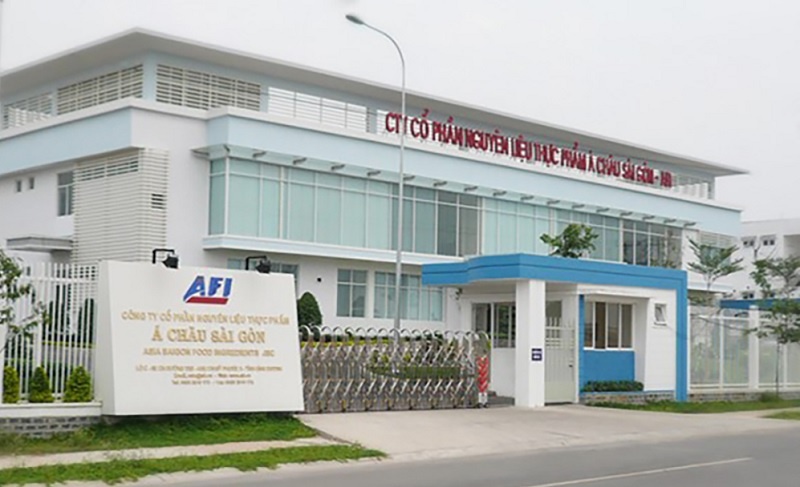Opportunities opening up for suppliers of food ingredients
Asia Ingredients Group (AIG), one of the pioneering Vietnamese enterprises in processing and the food ingredient industry, achieved outstanding business performance in 2022, according to a report released last week.
 |
| Opportunities opening up for suppliers of food ingredients, photo source: asiagroup-vn.com |
Despite the difficulties in rising raw material prices due to the energy crisis and inflation, AIG achieved its highest revenues ever at $560 million, and profit before tax up to $41 million.
AIG currently owns a series of subsidiaries that are well-known suppliers of raw materials in the market such as Vinamilk, Masan Consumer, Unilever, Nestlé, and Trung Nguyen. The increased demand for products from these groups has contributed to the growth of AIG in recent years.
The success of AIG could motivate domestic businesses to boldly enter a field that has a lot of potential for development, but currently lacks supply partners.
According to Assoc. Prof. Dr. Le Nguyen Doan Duy of the Vietnam Association of Food Science and Technology, Vietnam has a rich supply of agricultural products and food with guaranteed quality, suitable for the development of the food material processing industry, but its potential has not been fully exploited as processing enterprises still have to import more than 90 per cent of raw materials.
“Every year, domestic enterprises have to spend billions of US dollars on importing raw materials, making it very difficult for Vietnamese food products to compete with countries with similar products and lose the advantage at home,” Duy said. “The fear of supply chain disruption around the world and the energy crisis have made food companies very eager to build a stable supply to proactively source raw materials here in Vietnam.”
Statistics from the General Department of Vietnam Customs show that by the end of 2022, Vietnam spent more than $13.2 billion to import seafood, vegetables, and food processing materials.
Le Nguyen Doan Duy, director of business development at AIG, said in addition to the lack of standard processing facilities, Vietnam’s agricultural production areas are still quite fragmented, small, and lacking sustainable links, causing many difficulties for production and processing enterprises.
“If the company wants to build a processing factory with a capacity of 100,000 tonnes, the input materials must be at least 200,000-300,000 tonnes. However, the raw material areas cannot ensure this volume of input materials,” said Duy at AIG.
One of the top typical ingredients that AIG brings to the market is coconut, grown in the raw material areas of Ben Tre and Tra Vinh in the south, which accounts for 40 per cent of the total coconut production in the country.
It has also invested in a cassava starch processing plant, turning this food crop into a material of high economic value such as tapioca starch and glucose syrup. Its cassava material area is concentrated in four districts of Anh Son, Con Cuong, Tuong Duong, and Ky Son in the central province of Nghe An.
AIG’s director general Tran Viet Hung noted, “Investing in the development of organic material areas is of great significance to the agriculture industry and Vietnam in general because the purchase price of organic materials is about 5-10 per cent higher than that of conventional materials.”
According to statistics from the Ministry of Industry and Trade, Vietnam currently has over 8,500 industrial-scale agricultural product processing enterprises with a total capacity of about 120 million tonnes of raw materials per year.
After the trend of foreign-invested enterprises buying back shares and pouring capital into food businesses in Vietnam in 2016-2021, the opportunity to step into a large and potential playground is still open to Vietnamese businesses.
During the launch ceremony of its first two product lines in the Vietnamese market in November, Japanese dairy group Morinaga shared that the continuous growth of the dairy industry and food processing in Vietnam in recent years has been an important factor in the company’s decisions.
Nevertheless, difficulties stem from the pressure of input prices because 60 per cent of the raw materials for powdered milk production are imported.
The supply of raw materials has increased in price by 60-70 per cent since the second half of last year due to the high price of animal feed, along with the increase in freight costs, milk production costs will increase by about 50-60 per cent.
“However, we are still very optimistic and have positive forecasts about the production and trading of dairy products in the Vietnamese market,” said Nakamura Minoru, general director of Morinaga Milk Vietnam Co., Ltd. “We are also looking for domestic partners to contribute to the development of the food ingredient industry here.”
What the stars mean:
★ Poor ★ ★ Promising ★★★ Good ★★★★ Very good ★★★★★ Exceptional
 Tag:
Tag:
Related Contents
Latest News
More News
- Dat Bike accelerates sustainable mobility (January 07, 2026 | 15:24)
- Innovation to support modern healthcare development (January 07, 2026 | 10:00)
- Six localities record double-digit growth as regional performance diverges in 2025 (January 06, 2026 | 18:00)
- E-commerce market undergoes transformation amid rising competition and regulation (January 06, 2026 | 17:54)
- Vietnam’s industrial output hits seven-year high in 2025 (January 06, 2026 | 17:47)
- GELEX’s credit rating outlook upgraded to 'Positive' by VIS Rating (January 06, 2026 | 16:49)
- Finance sector lays firm groundwork for 2026 after major reform (January 06, 2026 | 15:30)
- Vietnam’s seafood exports surpass $11 billion in 2025 (January 06, 2026 | 08:51)
- Vietnam GDP posts second-strongest growth since 2011 (January 06, 2026 | 08:35)
- Double-digit GDP growth within reach with shift to higher-value expansion (January 06, 2026 | 08:33)






















 Mobile Version
Mobile Version